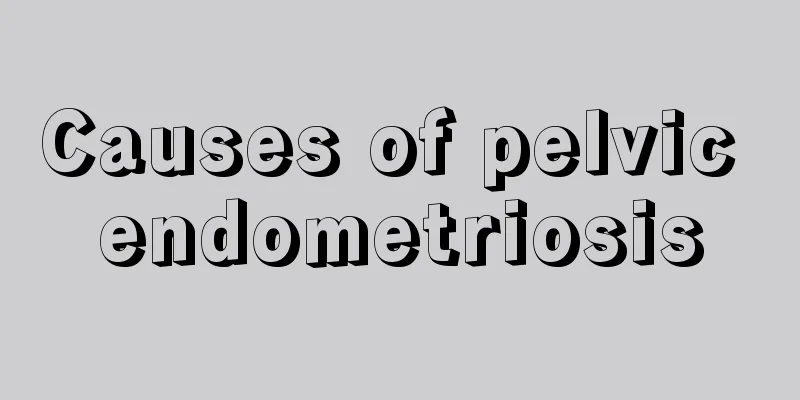Lump in breast after giving birth

|
After giving birth, mothers should pay more attention to their physical health. Many mothers focus on their children and don’t pay attention to themselves at all. This is very bad, because after giving birth, mothers may be more likely to have some problems. For example, they may easily have lumps in their breasts. What causes lumps in breasts after giving birth? What causes breast lumps after childbirth? 1. Check to see if it is lobular hyperplasia. It may be caused by fluctuations in hormone levels in the body. You can try taking Xiaoyao Pills for regulation. Patients with breast hyperplasia should go to the hospital for a specialist examination once a year, and if necessary, have a color ultrasound, infrared breast radiography or molybdenum target photography examination. It is recommended to take Ru'an tablets for treatment. 2. In some cases, it is a problem of milk congestion. If the congestion is severe, infection will occur and mastitis will occur. Mastitis is caused by milk stasis. If milk stasis cannot be eliminated in time, it will cause excessive pressure, local congestion and edema, and bacterial invasion to form inflammation. Symptoms of hard breasts after childbirth There were no lumps before delivery, but one or two days after delivery, after milk production, some lumps suddenly appeared in the breasts. Some were small bumps, and in some cases, the entire breast was severely swollen. Moreover, the milk doesn't come out, and I have to squeeze it hard with my hands to get out a little bit. Swelling or tingling throughout the breast. If the above phenomena occur, it can be determined that it is milk stasis, which is commonly known as milk blockage. The reason for milk blockage is that the mammary ducts are blocked when milk is just produced after giving birth. The milk accumulates inside, forming small lumps or lumps, which seriously affect milk supply. Some mothers have milk regurgitation after one or two days of blockage because it is not cleared in time, and the baby has to eat milk powder. Some of them developed mastitis and needed to go to the hospital for injections and medication. What's worse, some people have to undergo surgery due to suppurative infection caused by delayed treatment. We remind you: Don’t underestimate the small postpartum lumps, as they can cause great harm to the mother. Don't be blindly careless. How to treat breast lumps after childbirth
1. The simplest and most practical method is to pick out the thorns from the cactus, grind it into a paste, and apply it to the affected area (the effect will be better if an appropriate amount of Glauber's salt and indigo are added, for example, 10g of each can be added to the cactus paste and mixed evenly). 2. Traditional Chinese medicine conditioning and traditional Chinese medicine decoction treatment. Traditional Chinese medicine has great advantages, and there is no embarrassment of drug resistance, so the effect is much better. From my clinical experience, the effect of this treatment is much better than oral Western medicine or even better than intravenous Western medicine. I suggest that your mother find a Chinese medicine doctor with higher skills. 3. Traditional Chinese medicine massage treatment, this is the most effective treatment method. The specific method is to relieve breast edema and expel milk. It can be solved by a professional masseur, and most patients can be cured in one treatment. 4. Antibiotic infusion treatment, which is the conventional and least effective method. 5. If the case is more serious, comprehensive treatment can be used simultaneously to achieve better results. Postpartum breast lumps care 1. In the early stage of milk stasis, wear a bra to improve blood circulation, apply local cold compress for 3 to 5 minutes to reduce milk secretion, and you can continue breastfeeding. 2. When there is a lot of milk, the skin of the entire breast is tight, and it is difficult for the baby to hold the nipple for sucking, you can squeeze out some milk to soften the areola so that the baby can suck most of the areola correctly. 3. Feed your baby on demand and express excess milk in time. 4. For those with ulcerated or cracked nipples, if the pain is severe, you can use a "nipple shield" to breastfeed, or you can use a breast pump to suck out the milk or squeeze it out by hand and then feed it to the baby. At the same time, active treatment should be given, such as mixing cod liver oil and bismuth subcarbonate into an ointment, applying it locally after breast-feeding, and washing it off before breast-feeding. How to prevent breast lumps after childbirth 1. In the late pregnancy, you should pay attention to the cleanliness of the nipples and areolas. You can gently scrub them with warm water when taking a bath to exercise the nipple skin so that the nipples can tolerate the baby's sucking after delivery. 2. In the late pregnancy, there are more and harder scabs on the nipples. You can use a small piece of gauze to apply a little heated and cooled vegetable oil or baby moisturizing oil on the nipples. After the scabs soften, gently wipe them off with warm water. Never peel them off forcibly. 3. Adopt the correct breastfeeding posture and correct the baby's sucking method. Let the baby open his mouth wide and suck the nipple and most of the areola in his mouth. Avoid letting the baby sleep with the nipple in his mouth. 4. Wash the nipples with warm water before breastfeeding. Do not use soap, alcohol or other irritants to wash the nipples. After breastfeeding, leave a drop of milk on the nipples to help protect the nipple skin. 5. If the baby does not empty your breasts after each breastfeeding, you can use a breast pump or express milk by hand to empty your breasts. Let your baby finish one side each time before eating the other side. |
<<: Should I take folic acid when preparing for pregnancy?
>>: Reasons for inaccurate blood pregnancy tests
Recommend
Still looking haggard when you wake up? Is there any scientific basis for “beauty sleep”?
It is said that sleep is the best skin care produ...
What are the dangers of cold medicine to pregnancy?
Pregnant women are very careful during pregnancy....
How do you know if the follicle has ruptured?
If a woman wants to know whether the egg has spli...
Why does my waist hurt when I have my period?
Menstruation is something that every woman has to...
What is the reason for low back pain and yellow leucorrhea
When something abnormal or painful happens in a p...
When will Lake Baikal freeze? What to wear when visiting Lake Baikal
Lake Baikal is a popular tourist attraction in Ru...
What should I pay attention to during sex after a normal delivery and episiotomy?
Many women will take nutritional supplements duri...
I can't defecate when the due date comes.
We all know that when women reach the late stage ...
Is frequent urination a sign of impending childbirth?
After a woman becomes pregnant, as the fetus cont...
Hysteroscopic fallopian tube dredging experience
Fallopian tube obstruction is a more common gynec...
How to treat high estrogen levels? These methods are very effective
If a woman goes for a check-up and finds that her...
What is the introduction of Xiaolongkan instant hotpot? How to eat Xiaolongkan instant hotpot?
Xiaolongkan hotpot has been very popular in recen...
Breast granuloma surgery recovery period
Breast granuloma is generally a proliferative rea...
Nipples become hard, does it mean you are pregnant?
The breasts are an important part of a woman'...









